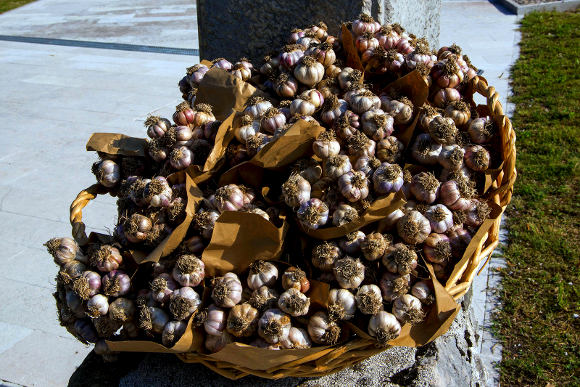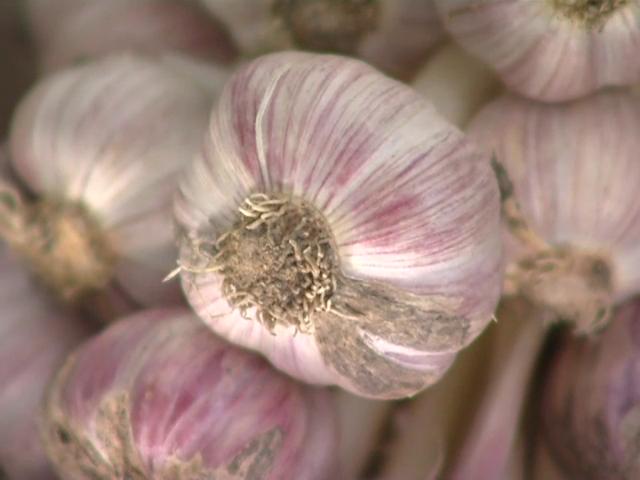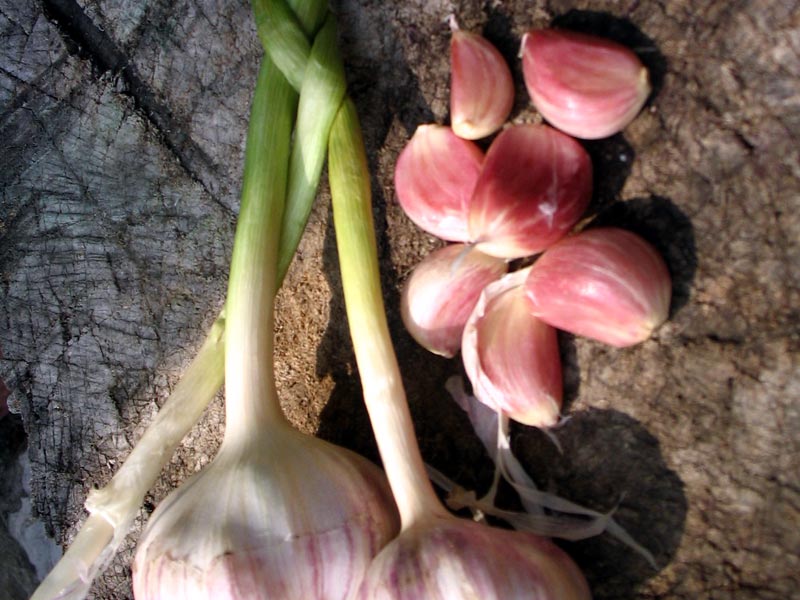
Resia Garlic
This post is also available in:
 Italiano (Italian)
Italiano (Italian)
Resia garlic is autochtonous of the Resia Valley, and it has been protected throughout the centuries thanks to the geographical isolation of these very areas.
Locally known as “strok”, this bulbous plant is currently being studied by the Faculty of Agriculture of the University of Udine.
A specific variety has thus been identified, of excellent quality, extremely fragrant and easily recognizable by its the reddish colour usually shown by the second layer of the bulb.
Strok is particularly suitable for the production of cured meats because it is sweet and devoid of the acrid aroma typical of most common varieties of garlic. The local cultivation does not involve the use of chemical fertilizers, nor any regular or massive use of pesticides.
Sowing takes place before the winter, at a depth of about 1.18 in., in small vegetable gardens facing south, which can stretch to an altitude of 3.280 ft.
In early spring, the shoots are pruned for proper development of the bulbs. Those very sprouts (locally known as “uorè”) are also a dish, boiled and used for salads.
In the spring, a very careful and delicate weeding (locally known called “smutikat”) is carried out, so as not to spoil the surface roots of these plants. Weeds are thus manually removed. Harvesting takes place in August, then the plants are entirely uprooted.
The product is left to dry for three days on racks or even the sidewalks, to facilitate the following cleaning procedure. Bunches or braids (known as “kitte”) of bulbs are placed in well-ventilated rooms for slow drying.
Finally, this type of garlic is packaged in small bunches of 4-5 bulbs and can also be kept for a year.
This post is also available in:
 Italiano (Italian)
Italiano (Italian)
Contatti
Resia(UD)



